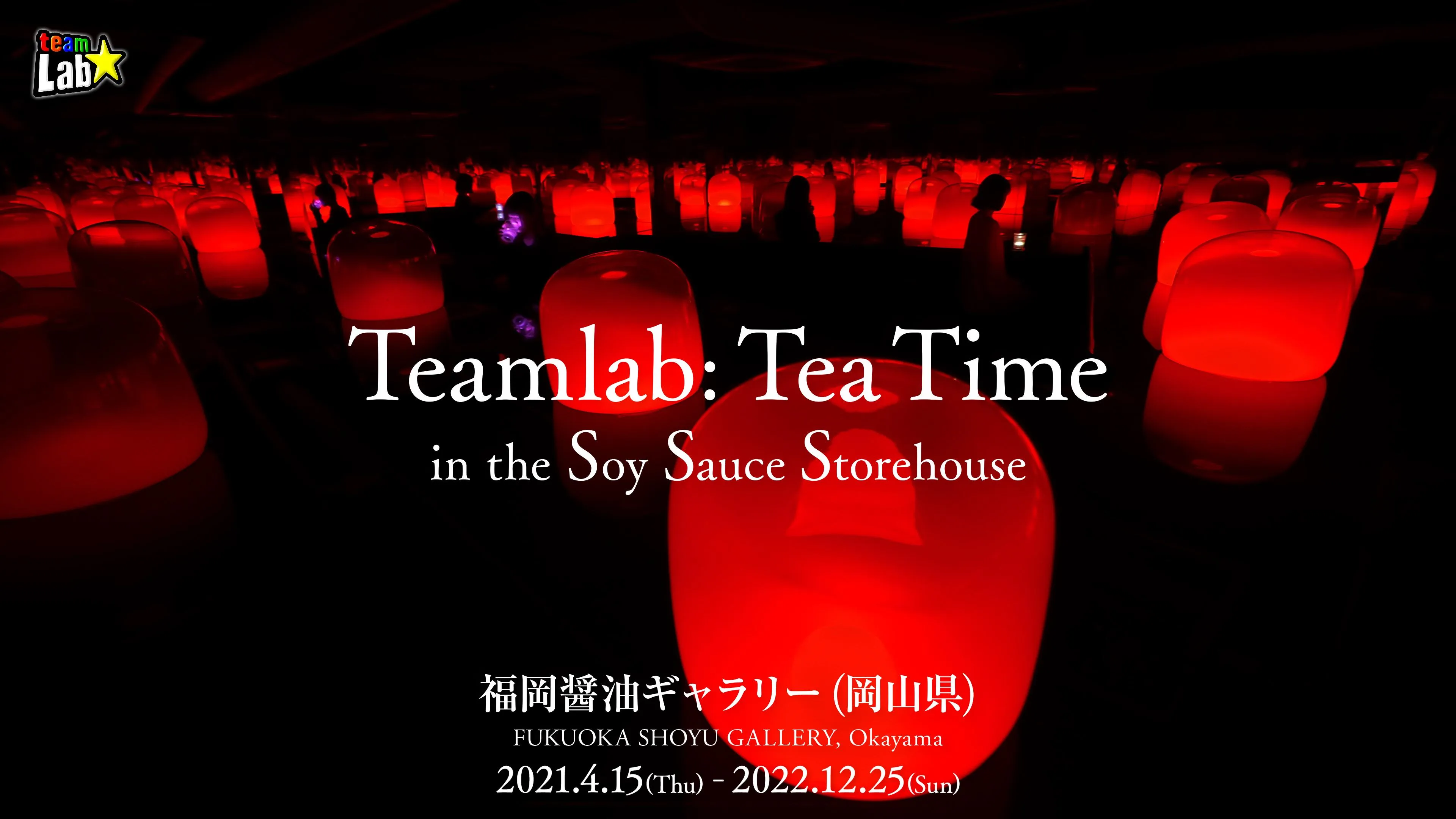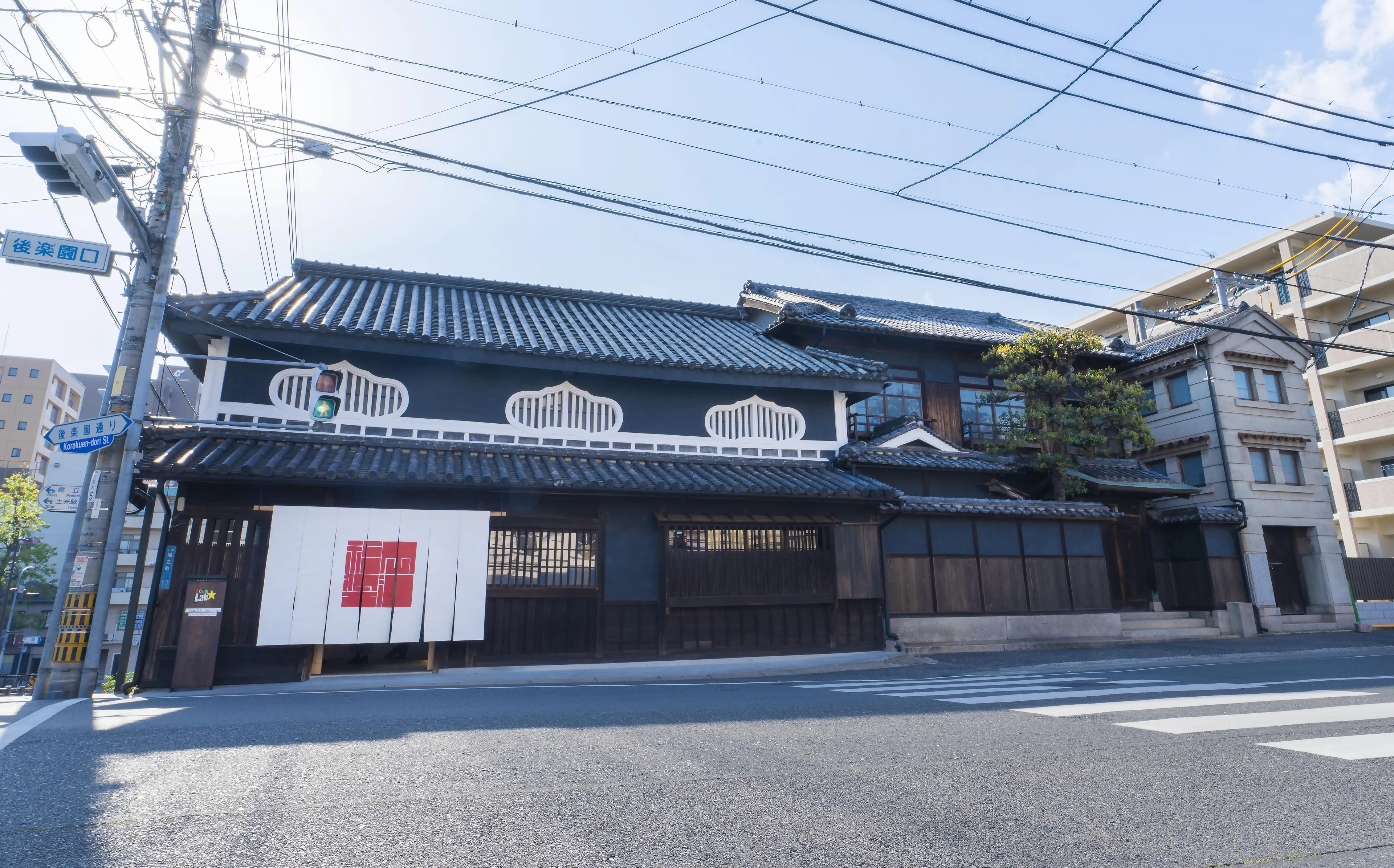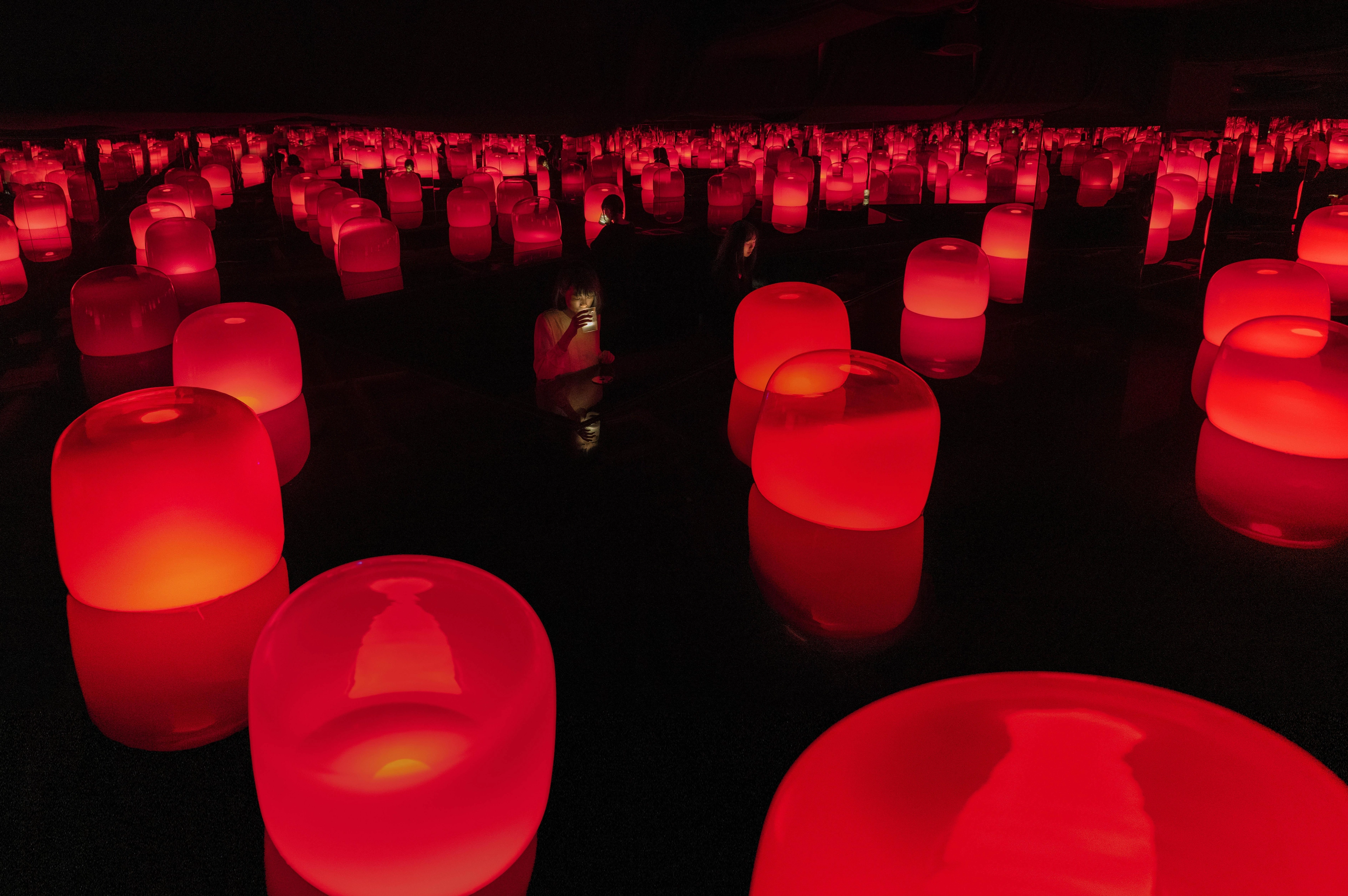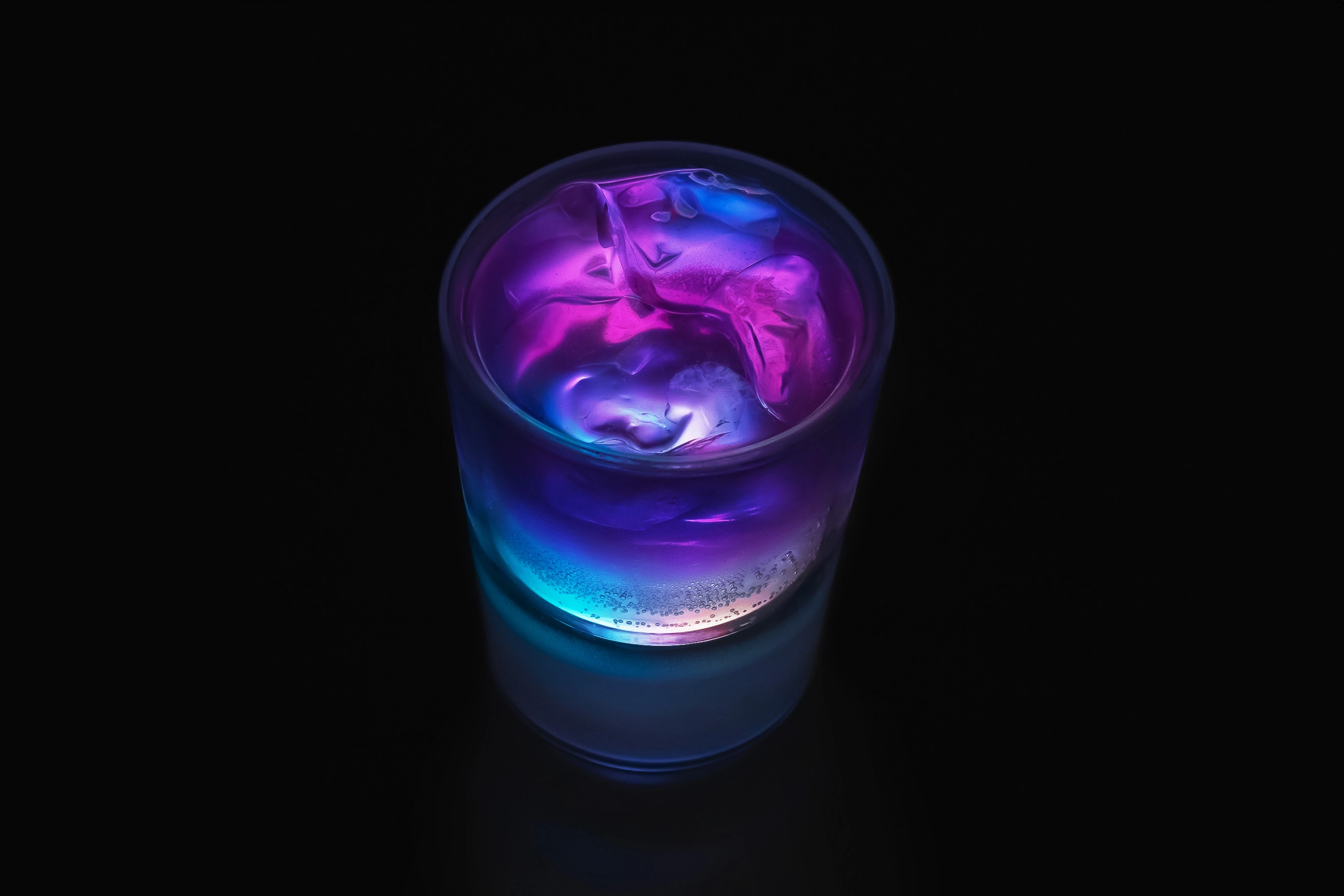Floating Lamps in Spontaneous Order - the Old Soy Sauce Storehouses
The lamps floating on the water, each lamp glows to it’s own rhythm. Over time, nearby lamps cause a spontaneous order phenomenon, and the lamps start to shine with the same rhythm.
When a person pushes shakes a lamp, it reverts to its original, unique rhythm, influencing the light of nearby lamps and the Tea in Spontaneous Order. The rhythms of light from the lamps and tea influence other nearby light rhythms. A lamp returning to its own rhythm will only affect the lamps and tea nearby, but as their rhythms change, they will in turn affect their surroundings, and the overall rhythms of the lamp and tea light will become disorganized. When a lamp is shaken or when a teacup is lifted to drink, they return to their original light rhythms.
When no one touches the lamps or tea, the nearby lights influence one another, and the disparate rhythms of the lamp and tea lights gradually evolve into a new rhythm together.
Spontaneous order occurs when different rhythms influence one another and eventually synchronize. The pendulums of two clocks hanging on the wall, the collective luminescence of fireflies, and the rhythmic motion of heart cells are all examples of systems - physical phenomena, neurophysiology, life systems, ecology - in which this tendency can be observed.
Spontaneous order is a phenomenon in which individuals, despite not being able to observe the larger picture, create a large, self-organized, ordered system as a result of their individual autonomous behaviors.
The lampshade is made from Murano glass (Venetian glass).








